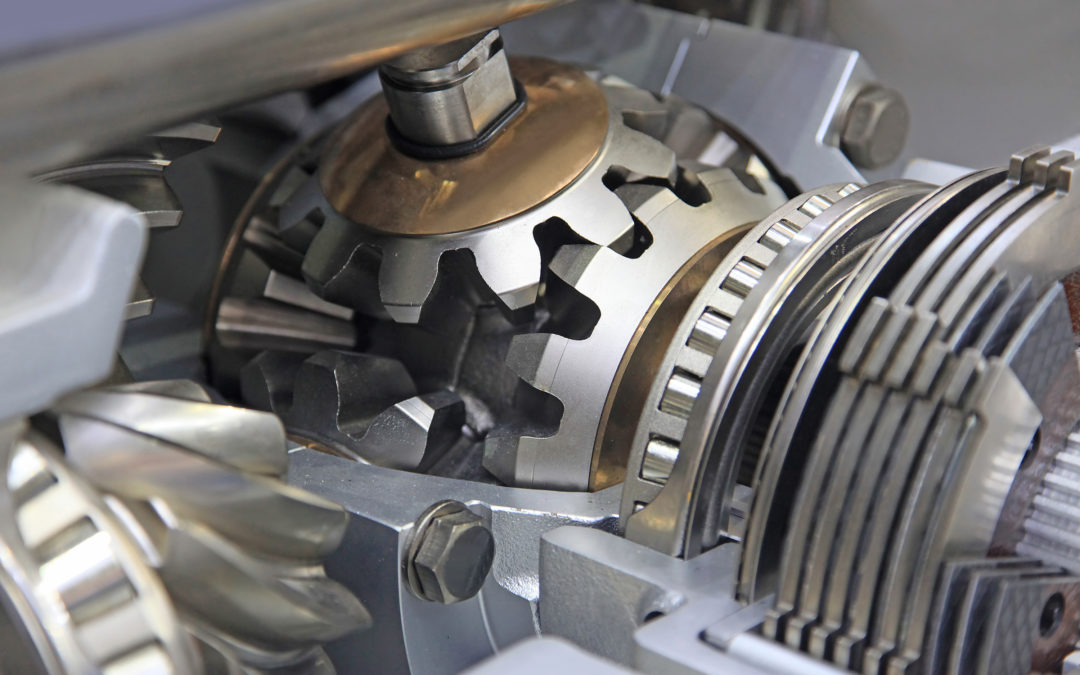Most drivers have probably never given much thought to the physics of driving. However, the law of physics plays an important role in many functions of driving, including how your vehicle safely handles curves and turns. A key component in this process is part of the axle assembly, your vehicle’s differential. In this month’s blog post, we feature the differential, its role, and what happens when there may be a problem with the differential.
What is the differential?
Unless you are driving on a long stretch of straight road in the Southwest desert, eventually you will need to make a turn or navigate a curve in the road. Your vehicle’s ability to drive through a curve or a turn is dependent on many things – your steering, wheels, and most importantly, the differential.
When your vehicle turns or curves while driving, the law of physics dictates that the front wheels will move at different speeds. This is because of the distance that each wheel needs to travel during the turn. Let’s say you are curving to the right with your vehicle at a medium speed, the wheel on the inside of the curve (your right wheel), will travel less distance than the wheel on the outside of the curve (the left wheel). To achieve this without losing control of the vehicle, the inside wheel must move slower than the outside wheel.
So, how does this work?
- Depending on what type of drive system you have in the vehicle, the differential may be in the front or rear wheel assembly. In the front, the differential is next to the transmission on the transaxle. In the rear, it connects to the transmission with a driveshaft.
- Through a series of pinion gears, the differential distributes torque to each individual wheel. This torque is modified for each wheel in the curves or turns to keep them simultaneously moving, while spinning at different speeds.
- Once you return to a straight direction, the wheels spin at the same speed to drive the vehicle forward.
What are possible differential problems?
Your vehicle’s differential is a hard-working component that is subjected to constant wear and tear. Even the best of components can develop problems over time if there is lack of maintenance or faulty parts.
The more common problems that may develop include:
- Differential fluid leak: The differential requires a specific fluid to keep the parts lubricated. If there is a leak, or the differential is poorly lubricated, a problem can develop. You may notice this problem with a whining sound when you are decelerating the vehicle.
- Damaged Universal Joints: U-joints are a coupling connection on the shaft. When they fail or are damaged from wear and tear, this affects the differential. You may notice heavy vibration when gaining speed.
- Damaged, worn, or misaligned gears: When the gears fail, this will impact the operation of the differential. You may notice a grinding or humming sound during vehicle operation.
A failed differential is an important item to address in your vehicle. Not only does it restrict your maneuverability, but it also represents a safety issue for you and your vehicle occupants.
How can you maintain your differential?
You can keep your differential working properly by making sure that the differential oil is always kept at the specified level. If the differential has a leak, this will lead to problems, so it is suggested that you have the oil level checked periodically.
Another important maintenance task is to ensure that your differential components are well-lubricated.
If you think there may be a problem with your differential, or would like it serviced, give the service professionals at Campus Repair a call to schedule an inspection and service appointment.

